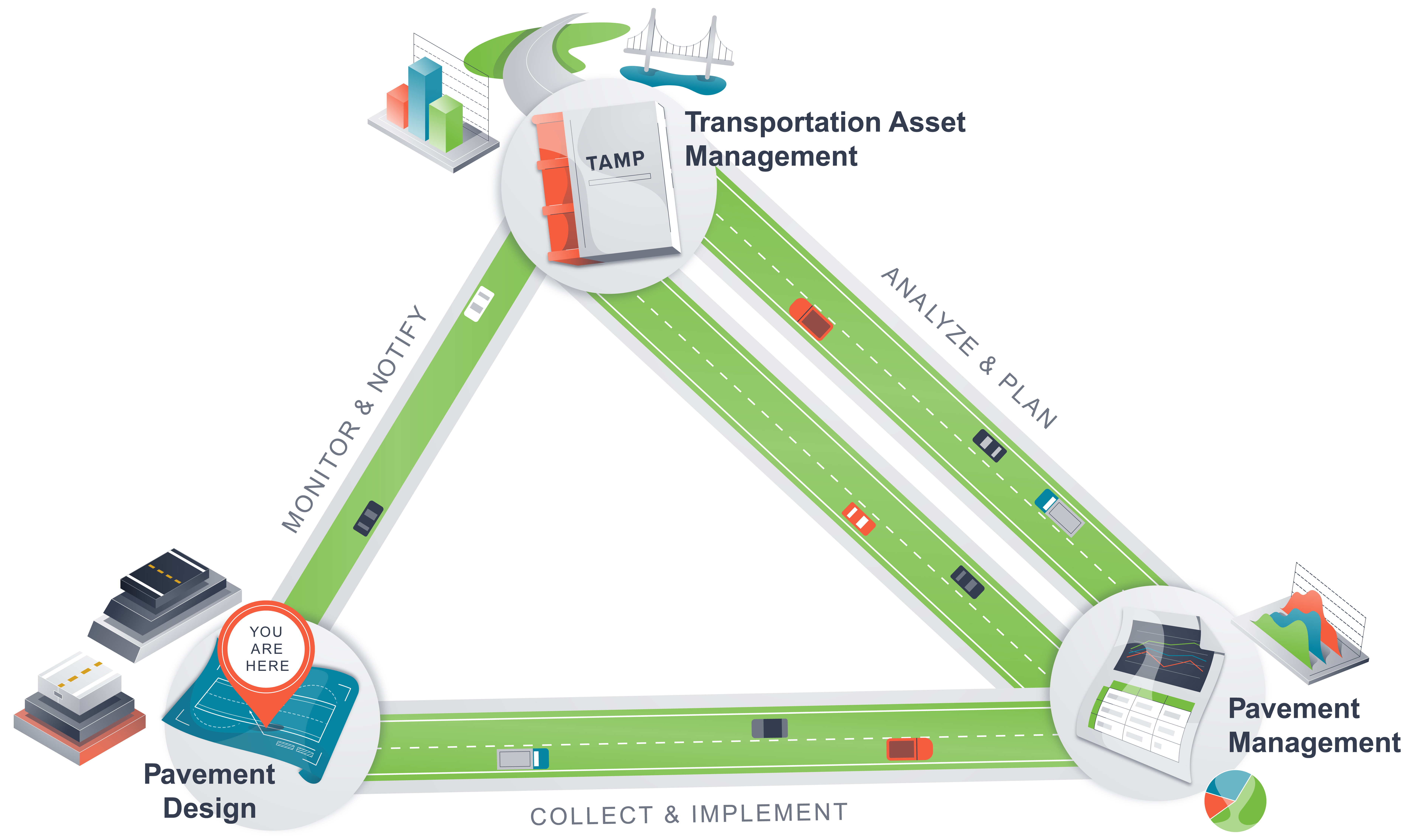Pavement Design

Pavement design is a project-level engineering effort based on detailed engineering and economic considerations meant to optimize pavement type and layer thicknesses to achieve project objectives at the lowest life cycle cost (23 CFR 626.2). The pavement design process also helps to determine the most appropriate strategy (i.e., pavement type, treatment type, and material), thickness, and features to ensure pavement construction, preservation, rehabilitation, and reconstruction projects provide the expected long-term safety, durability, and performance in a cost-effective manner.
Pavement design can be defined as a three-stage process that begins once a project has been selected for implementation.
- During the evaluation stage, all available pertinent information about the project is compiled and all necessary site surveys and testing are performed. The collected project information is reviewed to identify feasible pavement/treatment options and to develop the required design inputs for each option.
- In the design analysis stage, each of the final pavement/treatment options identified in the evaluation stage are designed in accordance with the agency’s pavement design procedure(s).
- In the strategy selection stage, the resulting design for each pavement/treatment option is carefully analyzed and compared with a goal of identifying and selecting the most appropriate design for the project. Depending on the agency and the number of options being considered, the selection process may be as simple as selecting the only option considered or as elaborate as conducting a detailed life-cycle cost analysis (LCCA) and strategy scoring analysis of multiple alternatives.
Pavement design uses detailed project-level information and data as inputs to the procedures and systems used to derive the designs.
Inputs consist of the preliminary scoping information for a given project and project-specific technical data required to perform a design analysis and strategy selection. The scoping information includes general project data such as project location and limits, traffic, geometrics, and existing pavement type and condition. Additional scoping information may include the potential treatment strategies for the desired future performance, as well as construction cost estimates and construction timing.
Project-specific technical data may include details about the pavement history; pavement distress type, severity, and extent; characterization of existing subgrade soil(s) and pavement structure(s); current and predicted traffic levels and classification; and the prevailing climate and site conditions.
The key output of the pavement design process is the final approved design for the selected pavement/treatment type. Outputs are documented for design approval and for use by other units, such as the construction unit or pavement management unit, as needed. A pavement design report will typically include all the project-specific technical information compiled for the project, as well as a listing of the design inputs that were developed and used in the design process. It may also contain relevant design outputs such as predicted performance curves, an assessment of treatment needs throughout the design life, life-cycle cost calculations, and type selection analysis results.
New to pavement design or want to learn more? Read the Pavement Design report.

